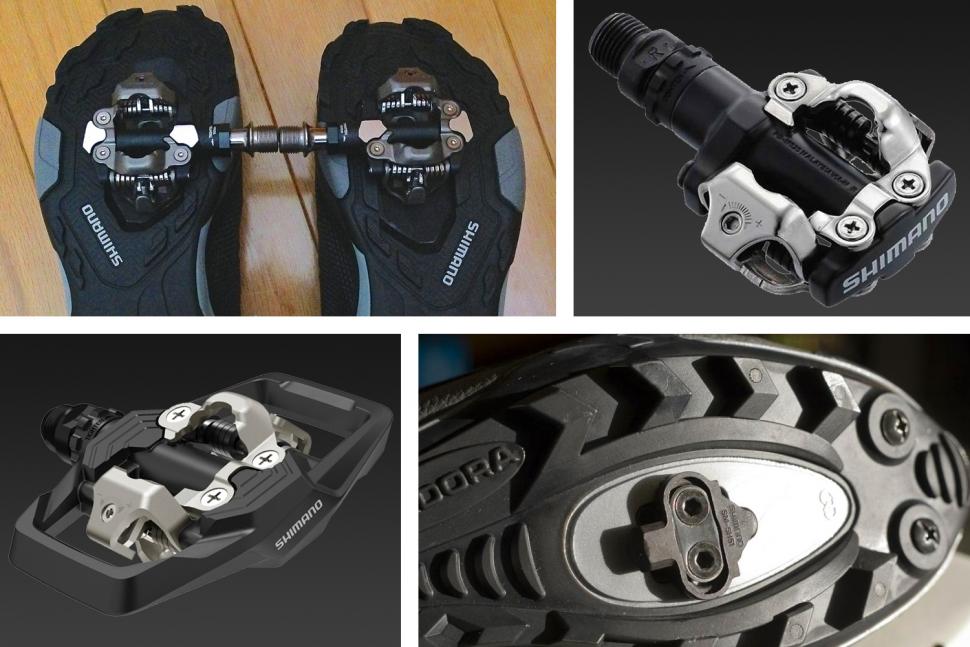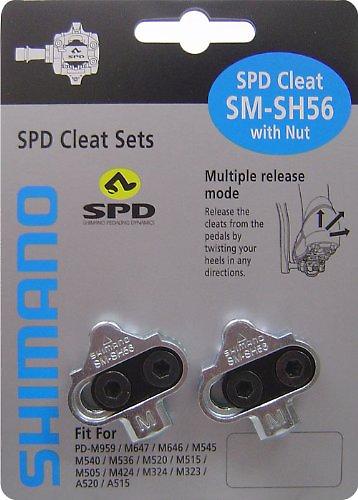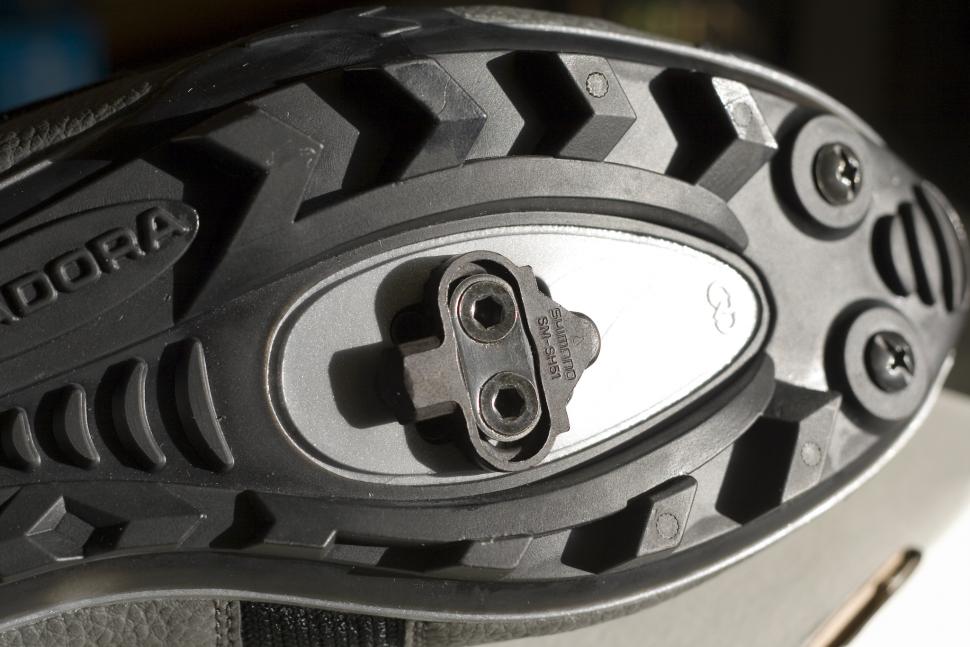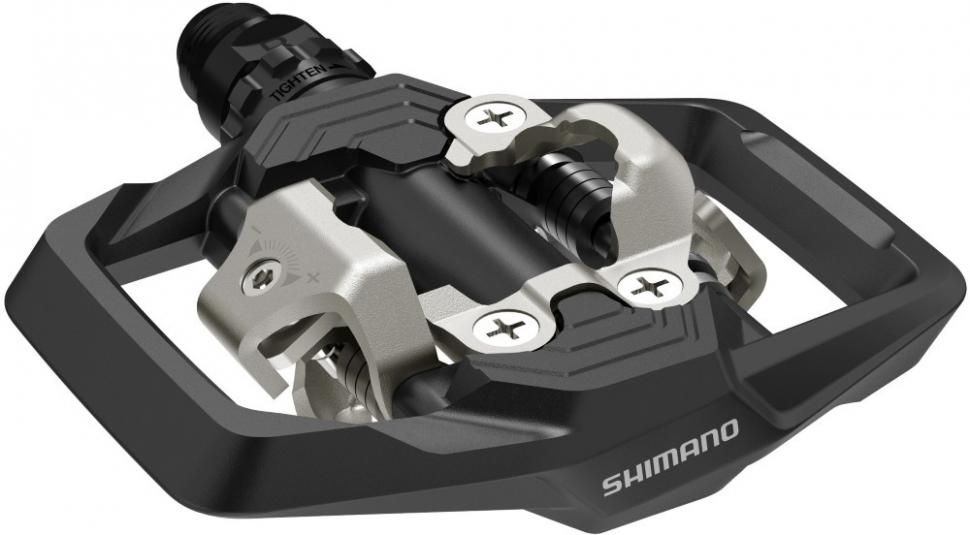- News
- Reviews
- Bikes
- Accessories
- Accessories - misc
- Computer mounts
- Bags
- Bar ends
- Bike bags & cases
- Bottle cages
- Bottles
- Cameras
- Car racks
- Child seats
- Computers
- Glasses
- GPS units
- Helmets
- Lights - front
- Lights - rear
- Lights - sets
- Locks
- Mirrors
- Mudguards
- Racks
- Pumps & CO2 inflators
- Puncture kits
- Reflectives
- Smart watches
- Stands and racks
- Trailers
- Clothing
- Components
- Bar tape & grips
- Bottom brackets
- Brake & gear cables
- Brake & STI levers
- Brake pads & spares
- Brakes
- Cassettes & freewheels
- Chains
- Chainsets & chainrings
- Derailleurs - front
- Derailleurs - rear
- Forks
- Gear levers & shifters
- Groupsets
- Handlebars & extensions
- Headsets
- Hubs
- Inner tubes
- Pedals
- Quick releases & skewers
- Saddles
- Seatposts
- Stems
- Wheels
- Tyres
- Health, fitness and nutrition
- Tools and workshop
- Miscellaneous
- Buyers Guides
- Features
- Forum
- Recommends
- Podcast
feature
 Find out how multi-release cleats make it easy to get started with clipless pedals March 2021
Find out how multi-release cleats make it easy to get started with clipless pedals March 2021Find out how multi-release cleats make it easy to get started with clipless pedals
Lots of riders struggle to get used to clipless pedals for fear they'll fall because they won't be able to get out of them. But there's a secret that makes life much easier and safer for clipless beginners.
That secret is simple: Shimano multi-release cleats. To help you understand what that means, a bit of background.

Shimano multi-release cleat
Clipless pedals have a spring-loaded mechanism that grabs a specially shaped stud, known as a cleat, on the sole of the shoe. You press the cleat down to click it into the mechanism, and twist out to release.
Because they hold your feet in the right place on the pedals and keep them there, clipless pedals are more efficient than regular shoes and flat pedals. Shoes for clipless pedals have stiff soles, which also improves efficiency and comfort.
There are two types of clipless pedal. Pedals for road racing follow the original concept introduced by Look in 1984. The cleat stands proud of the sole and is attached by three bolts. This allows an uncomplicated, very rigid sole, but is awkward to walk in. The pedals only have a mechanism on one side, so to clip in you have to catch the nose of the pedal just right, which takes a while to learn.
In 1990, Shimano introduced its SPD (Shimano Pedalling Dynamics) design. A smaller metal cleat is mounted to the shoe with two bolts, and fits in a recess in the sole. The recessed cleat makes it easier to walk in SPD shoes, and helps guide the cleat into the mechanism, making it easier to clip in.
For clipless beginners, SPD pedals are the way to go. Most pedals are double-sided, which makes learning to clip in much easier.
.jpg)
SPD pedals and shoes from below (CC BY-NC 2.0 Flickr:Alan McDonley)
The other advantage of the SPD system is the availability of Shimano's multi-release cleats.
Standard SPD cleats only release when the rider twists her foot outwards, but multi-release cleats come out if you pull up hard too. That's a far more natural action for a clipless beginner, who's probably used to flat pedals that you just lift your foot off.
Multi-release cleats are easy to recognise, as they're stamped with a large letter M. If you're buying online, look for product code SM-SH56.
The bad news is that very few models of Shimano pedals come with multi-release cleats, so probably you'll have to buy them in addition to the pedals. The good news is that basic SPD pedals are very cheap but really durable, so buying extra cleats isn't a big financial burden.

Shimano PD-M324 combination pedals
The exception — and a very good choice for SPD beginners — is Shimano's PD-M324 combination pedals. These have a flat platform on one side and an SPD mechanism on the other, and you get multi-release cleats in the box.
Buy Shimano PD-M324 combination pedals — £44.99
The alternative is double-sided pedals and separate multi-release cleats.

Shimano PD-M520 pedals
Shimano's cheapest double-sided pedals can be had for less than the cost of a cheap night out. The excellent PD-M520 pedals are supposed to be £37, but can sometimes be found for as little as £20. The only thing they give up to more expensive versions is a bit of weight.
Buy Shimano PD-M520 SPD pedals — £29.99
Shimano PD-ME700 SPD pedal
Some folks find pedals like the M520s a bit small. The PD-ME700 pedals are an excellent alternative. Intended for mountain biking, they have a platform around the pedal mechanism that supports more of the shoe. This works really well with shoes that have more flexible soles and are therefore easier to walk in.
The RRP of PD-ME700 pedals is £53, but you can find them for less.
Buy Shimano PD-ME700 SPD platform pedals — £40.00

With either PD-ME700 or PD-M520 you'll need multi-release cleats.
Buy Shimano SM-SH56 multi-release cleats — £11.99
Your local bike shop is a valuable source of advice and information on clipless pedals.
Shimano dealers are all listed at the website of importer Madison Cycles.
What shoes you should get to go with your pedals is a whole other article, but suitable shoes start from about £30. Check out the selections at Chain Reaction, Wiggle and Amazon.
In case you're wondering why they're called clipless pedals, it's because pedals used to have metal cages, called toe clips, and leather straps to hold the show in place. Racing shoes had cleats that were slotted to fit the cage of the pedal. To get out, you had to loosen the strap. Falling over at traffic lights behind a busload of schoolkids was not unknown.
Clipless pedals get their contradictory name because they don't have the metal clips of yore.
.jpg)
Even cats love clipless pedals (CC BY 2.0 Matt Scott:Flickr)
John has been writing about bikes and cycling for over 30 years since discovering that people were mug enough to pay him for it rather than expecting him to do an honest day's work.
He was heavily involved in the mountain bike boom of the late 1980s as a racer, team manager and race promoter, and that led to writing for Mountain Biking UK magazine shortly after its inception. He got the gig by phoning up the editor and telling him the magazine was rubbish and he could do better. Rather than telling him to get lost, MBUK editor Tym Manley called John’s bluff and the rest is history.
Since then he has worked on MTB Pro magazine and was editor of Maximum Mountain Bike and Australian Mountain Bike magazines, before switching to the web in 2000 to work for CyclingNews.com. Along with road.cc founder Tony Farrelly, John was on the launch team for BikeRadar.com and subsequently became editor in chief of Future Publishing’s group of cycling magazines and websites, including Cycling Plus, MBUK, What Mountain Bike and Procycling.
John has also written for Cyclist magazine, edited the BikeMagic website and was founding editor of TotalWomensCycling.com before handing over to someone far more representative of the site's main audience.
He joined road.cc in 2013. He lives in Cambridge where the lack of hills is more than made up for by the headwinds.
Latest Comments
- ktache 2 hours 37 min ago
The small frame, the aggressive posture, lots of standover height.
- mctrials23 3 hours 32 min ago
As i've said before, the police should be sued for a lot of money when someone they have knowingly ignored has gone on to commit a serious crime....
- David9694 3 hours 40 min ago
'Bad parking' blocks firefighters multiple times on same emergency call-out...
- David9694 3 hours 44 min ago
Cambridgeshire boy, 13, crashes Audi into garden wall after taking it from home...
- Adam Sutton 4 hours 30 min ago
Good stuff. Now do it on cycleway C9 through Hammersmith to Chiswick.
- mark1a 4 hours 39 min ago
It's technically allowed but it's not known as "London's Orbital Car Park" for nothing.
- Dogless 5 hours 47 min ago
You're defending bombing hospitals and refugee camps and starving children.
- mattw 8 hours 27 min ago
Used car salesman is a complete attention-seeking plank....
- tubasti 8 hours 44 min ago
I don't know if they're any better, but they's certainly become more boring.
- FionaJJ 9 hours 10 min ago
At risk of being cynical, and stereotyping the police, it's so they don't have to leave the comfort of their panda cars and pursue on foot when...


Add new comment
26 comments
Can't tell if road.cc are tapping my phones but I've only just returned from a ride on new used shoes with multi-release cleats pre-installed, wondering why they came unclipped so easily....
Nearly took my shin off on a particularly tough incline, with panniers fully loaded! Wish I'd read this months ago.
Crank Brothers or Look EggBeaters have FOUR sides to clip into, never fail and are great on the knees. Very minimalist and I suppose you could beat eggs with them when camping and travelling light.
I really like my multi release cleats, for my Hybrid. You can step off the pedal, as if it was a flat pedal ( if you flex your foot and pull up ) whilst keeping the extra dynamic advantage of a binding.
I'd recommend the 324 over the 424 every day of the week for utility cycling & if you will be using non cycling shoes at all.
The rocking resin cage around the SPD centre of the 424s doesn't quite let the cleat press down fully out of the way with say a pair of Adidas Sambas or regular trainers and Idt always feel it Princess and the Pea like pressing into the sole of my foot.
With the 324's you have a proper flat pedal with a more solid feel & better grip for cycling in regular shoes to go shopping or night out or whatever when cleated shoes aren't the right thing or you don't want that click clack everywhere you walk.
It becomes second nature extremely quickly if you commute or take longer rides in SPDs to flip the pedal SPD up and click in as you pull away from stopped.
Also if so minded you can easily put pedal reflectors on the 324's for that little bit extra at night.
520s have served me well for years on my road bikes too.
They are indeed the way to go. I use XT pedals for commuting on the crosser, Saints on my MTB and XT caged pedals on the Cervelo too (the latter does earn me some looks of disgust though)!
They are a way to go.
Once there is a pedal power meter for SPD (mountain bike type) I am going back to that.
I switched last year to PowerTap P1 pedals, which require Keo cleats and just used the old pedals in the winter, because I still have SPD winter boots.
I don't notice any difference in power transfer with road pedals, but they are just more annoying to clip in / out and for walking. Having the same pedals on all type of bicycles is also an advantage.
there's now a really decent hack (obv. it will void warranty, caveat emptor, etc) that lets you fix a pair of Assioma Duo's onto Expedo's SPD pedals. Just search Youtube.
The M424 pedals are excellent for commuting. Because you don't actually need to be clipped in to use them, you can simply stamp on the pedals as the lights go green and then clip in when you are up to speed.
Eventually, you get so used to the action of clipping in that it becomes very quick, but even when you miss, you still can put pressure on through the pedals. The same cannot be said of my SPD-SL pedals on my road bike! Once you're in those, you don't want to have to put your feet down again unless absolutely necessary.
This does seem to be an advantage with this type of cleat, if it's in the right place most of the time you just set off pedalling and the clipping in happens automatically. No stomping required.
520s are the bomb
At 45, I recently started using cleats (having used old-style clips as a teenager) and have ended up with exactly the solution suggested here - double-sided pedals and multi-release cleats. Fabulous combo - works really well for me.
I used Shimano SPD 520 clipless for years, but the hot spots on the ball of your foot they can create permanently damaged the nerves in my feet, causing a complete loss of feeling. I switched to 100 x 100 mm platform pedals and I now vastly prefer them for urban riding. Besides all the advantages of platfroms and avoiding hot spots and nerve damage, there is no more clipity-clop walking around in cafes and shops or on the train or the ferry. I can now ride in my Converse's if I want to.
Time ATAC or go home.
I am using Shimano PD-T420 CLICK'R pedals on my road bike. Using my bike also for communting, I can easily pedal with my leather shoes for office on the flat side.
Flat side:
https://media1.rosebikes.de/product/1850/1/9/1950580_2.xftmkshtfu.jpg
SPD side:
https://media1.rosebikes.de/product/1850/1/9/1950580_1.mumyn6qqvt.jpg
And those CLICK'R pedals have a lower spring tension, too. Great for a clipless beginner, and great for commuting.
a handy tip I was given for teaching people to use clipless is set the bike up on a turbotrainer - can practise clipping and unclipping until confident - done this with a with a few people and seems to work
if you buy a pair of shimano mtb shoes* then the cleats come with the shoes
decathlon do a good value version of the spd one side / normal other side pedal which is SPD compatable as well
http://www.decathlon.co.uk/500-dual-function-leisure-bike-pedals-id_8173...
*as this is road cc should point out that "The Rules" need to be considered and then ignored as practicality overules unless you do actually race
Or just buy a shoe from their RT range which are road shoes with smooth 'touring' soles. I have RT82s currently. They use the same last as my XC mtb shoes so it's an easy swap and I know I'm comfortable in either.
Mavic, Specialized and I'm sure others do similar 'touring' shoes that look like road shoes, have a decently stiff sole but take MTB style SPD cleats.
One of the other advantages of clipless pedals is that you can get more power out of your legs by being able to pull up on the pedal stroke in addition to pushing down however, this highlights the disadvantage of multi-release cleats since if you pulled up on these your foot would come out of the pedal.
That's not my experience: when clean and in decent condition, I find they're solid even with quick or sturdy upstrokes on hills, and that they need a bit of a 'flick' to disengage, which suits me fine.
Agree, I use these for all my riding and find involuntary unclips are exceedingly rare. They really are a cake and eat it solution, you get the advantages of clipless with no risk of getting it wrong and going splat.
GCN tested this in the lab in a recent YouTube video and found that clipless did not increase power - they seemed a bit shocked that the common precept that clipless are better for power and efficiency could was not proven in testing.
No GCN did a video demonstrating some very bad science. Utter nonsense.
My understanding of current thinking is that you should not be trying to pull up (damaging to knees being the reason) only "getting your feet out of the way" during the up stroke. You should still be actively kicking forward at the top of the stroke and pulling your foot back at the bottom - these would be sensible reasons why a cleat would seem to be an advantage over flat pedals. Having said that good flat pedals with decent raised grips (the little bolt style ones especially) used with flat rubber-soled shoes are nearly as good for kicking forward and pulling back.
Noting the comment about the GCN findings on power I am not entirely surprised - (i) with a seasoned rider who has been using cleats for some time, they would still naturally put their foot in the right place on a flat pedal for maximum power (ii) the upward stroke point, and, decent flat-pedal-to-shoe adherence for kick and pulling back point, both I have just mentioned. The reality is however, outside of test conditions, that most flat pedals don't have good grips and owners don't place their foot in the most efficient place on the pedal
I started on the multi-release clip and found them to be extremely good. Never had a false release and only swapped later on to Speedplay for a better float.
Except that is not the case at all. Multirelease alows you to release in multiple lateral directions, not if pulling upwards.
I only ever use multirelease cleats and pull up on pedals all the time. Without coming out.
These are indeed awesome: I still use 520 pedals with the SH56 cleats for my commute; I don't think they can be beaten for stop-start over mixed terrain.